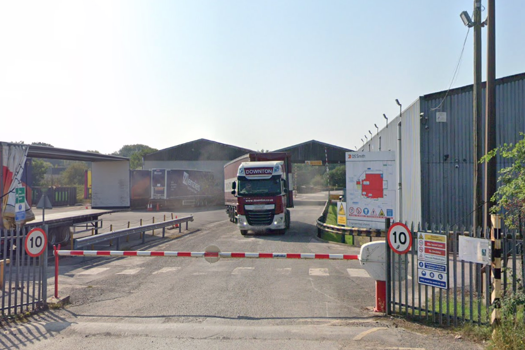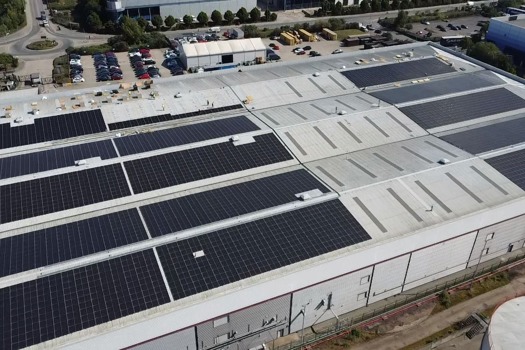With such choice available how can printers ensure that they are offering clients the most suitable and effective materials? Is a website the best source of information for a buyer or is a good old-fashioned conversation still the best way forward?
Picture the scene, a client has a marvellous idea of exactly how they want their eight-metre-wide conference wall to look. It’s the job of the printer to guide the client to achieve their goal with the best materials and applications. Gary Wagstaff director of Caerphilly- based Print Sauce says there’s only one way to do this: “By asking questions. Where is the product going? How long is it required? Is it in a high-traffic area? We look at each job individually. There are so many options available we look at the design and ask the client questions that will determine which product is best suited to each individual job.”
Heather Ryder from large-format print specialists, Rocket Media, believes for printers to be able to provide the best advice to their clients requires them to have strong relationships with suppliers, so they know themselves what’s happening in the industry. “We’ve found that it really helps to work closely with the supplier as they obviously have the best understanding of their materials. We then talk at length with our clients to ensure that we’re meeting their requirements.”
Octink managing director Mike Freely, whose client list includes Red Bull, Superdry and the Royal Horticultural Society, says printers should focus on becoming authorities in their areas of expertise. “Clearly every printer has their own market focus and is trying to match customer expectation. In our business we do a lot of work in the property and construction sector so it’s important say from an outdoor perspective that materials are robust, meet all service life requirements and of course perform well from a colour perspective.”
Wagstaff and his team at Print Sauce make it their business to stay informed of changes and developments in the industry and like to show previews of what the print will look like. “We stay up to date on new materials via trade shows and regular meetings with our reps, so we can be confident in our product knowledge and offer the best product for the job,” he explains. “We always give the customer options to suit different price points and explain the differences between materials. We produce samples if required, so the client can see how their image will look and feel.”
Freely at Octink embraces industry training to ensure they always stay ahead. “We have recently engaged with an organisation called Make It Happen, who provide training on material selection and the most up to date sign-making methods, which has really helped grow the material knowledge of our client-facing team,” he continues.
In a similar vein, clients of Print Sauce benefit from the firm carrying out tests on substrates to ensure it’s offering the best service. “We see this as a fundamental aspect of our business. If we are not improving we are going backwards. There is so much competition for work the differentiating factor for us is service. We conduct surveys after each order and ask questions about each stage in the order process from quote, production, installation or delivery. This has flagged up mistakes or issues, which we then can deal with. Everyone makes mistakes, but we do our best to learn from them and not make the same one twice.”
Digital customer service
It seems that the jury is still out when it comes to the importance of whether printers’ websites should assist customers to make decisions on what materials, substrates and finishes they use. Rocket Media see their website as an essential tool to help customers gain a certain level of understanding of what they offer. “We’ve separated our website into sections, for example External Graphics, POS Graphics and Exhibition Graphics, in order to make it easier for our clients to find what they need. Each section then gives a fairly wide overview of what we do and clearly states the materials that we regularly use. However, talking to them provides us with a fuller understanding of their requirements and gives us the option to recommend options if they’re not quite sure about what might work best,” says Ryder.
Simon McKenzie, managing director at Birmingham-based Hollywood Monster, thinks that clients need personalised advice and guidance and online resources can only go so far. He says: “We’re the experts at the end of the day. Clients come to us with an idea and it’s our job to tell them the best and most practical way to do it. With large format print you have to take into consideration health and safety. You also have to look at costs and waste. You can’t get real details from a website you need to speak to someone and go over things like risk assessments and health and safety issues.”
Wagstaff explains Print Sauce prefers to use its website as a shop window into recent hero projects, rather than try to showcase everything they offer. “Our website would be far too big if we listed all the materials available to a customer. Instead we try to show our quality, show some interesting projects and uses of materials and instil our brand values so the customer feels confident we know what we are doing and can offer them the solution to their requirement.”
Is creativity still king?
It’s all well and good finding clients the perfect materials, but surely creativity is just as big a part of the industry. If the design isn’t up to scratch, then you could have the perfect print, but it won’t do what it is intended.
Print Sauce sees creativity as just as important as the materials themselves. “Having a great product is one thing, but you need to show how it can be used in new and exciting ways. We’re still discovering new ways of using materials that have been around for decades and we do our best to show these to clients to help them to stand out,” says Wagstaff.
Freely says creativity goes hand in hand with innovation. “It’s essential. We love innovation because our customers rely on us to provide creativity, insight and ideas. Doing what you have always done is no longer acceptable and the expectation to deliver something different is high.”
Ryder highlights what is possibly the most important aspect – practicality: “It depends on what you mean by creativity,” says Ryder. “Ideally you need to be knowledgeable and have a good understanding of artwork, although that can depend on the type of service that you’re offering. We’re fortunate to have our design studio and production house under one roof so we can offer the full design package. As regards to materials, there are new possibilities coming out all the time, but the market can be very price-driven and sometimes short of time, so tried and tested materials are still very important.”
Case study: Rocket Media
Rocket Media recently supplied graphics for a seven-metre-wide conference back wall which needed to be completely replaced during a speedy 20-minute comfort break. Rocket Media team applied a set of permanent vinyl graphics required for the second half of the programme, then on top of these they applied a 7m length of printed Ritrama blockout vinyl, which nicely obscured the graphics underneath. During the break the team peeled off the top set, magically revealing the graphics for the second half of the programme.
Favourite materials
Print Sauce We love Metamark’s MD5 printable vinyl. We have been using it for over five years and it has never let us down. They also make a high-tack version which is great for internal wall coverings. We have tried other brands in the past, but never found anything that prints as well and is as easy to apply.
Hollywood Monster We’re really excited about textiles. It’s advanced massively over the last five years and there are so many applications offering different looks and feels.
Octink We like the more ‘architectural’ finishes at the moment and the opportunity to transform surfaces with products that mimic glass and woodgrain or even leather and marble.
Rocket Media That’s easy, one of our favourite materials is Ritrama blockout vinyl.










